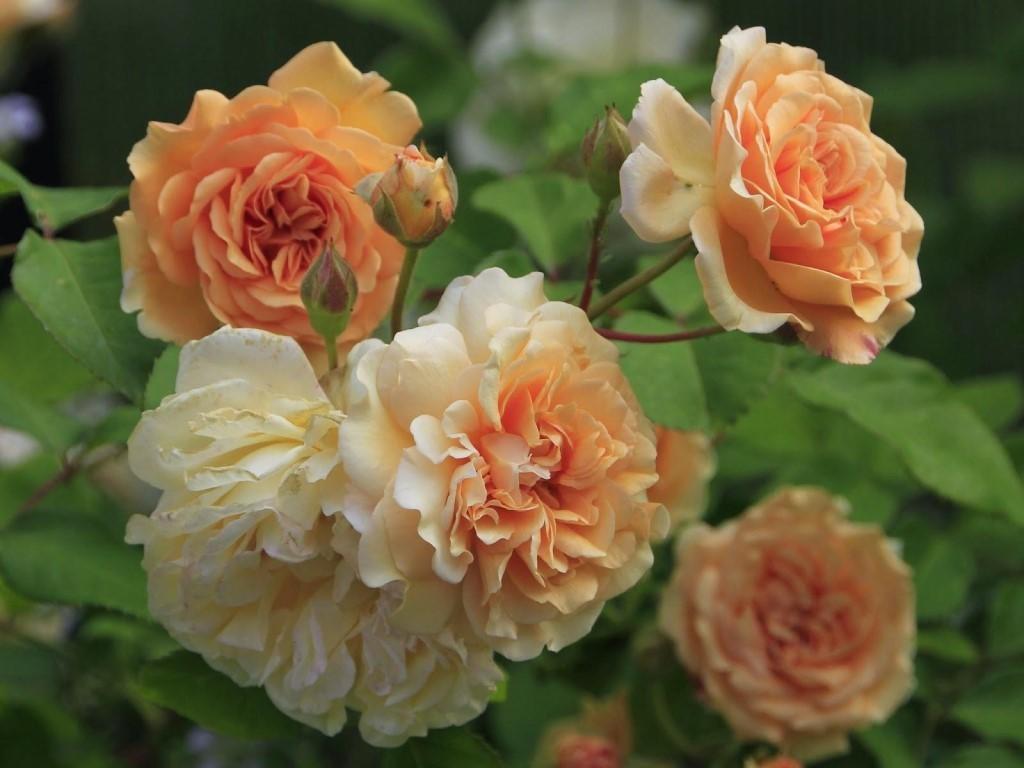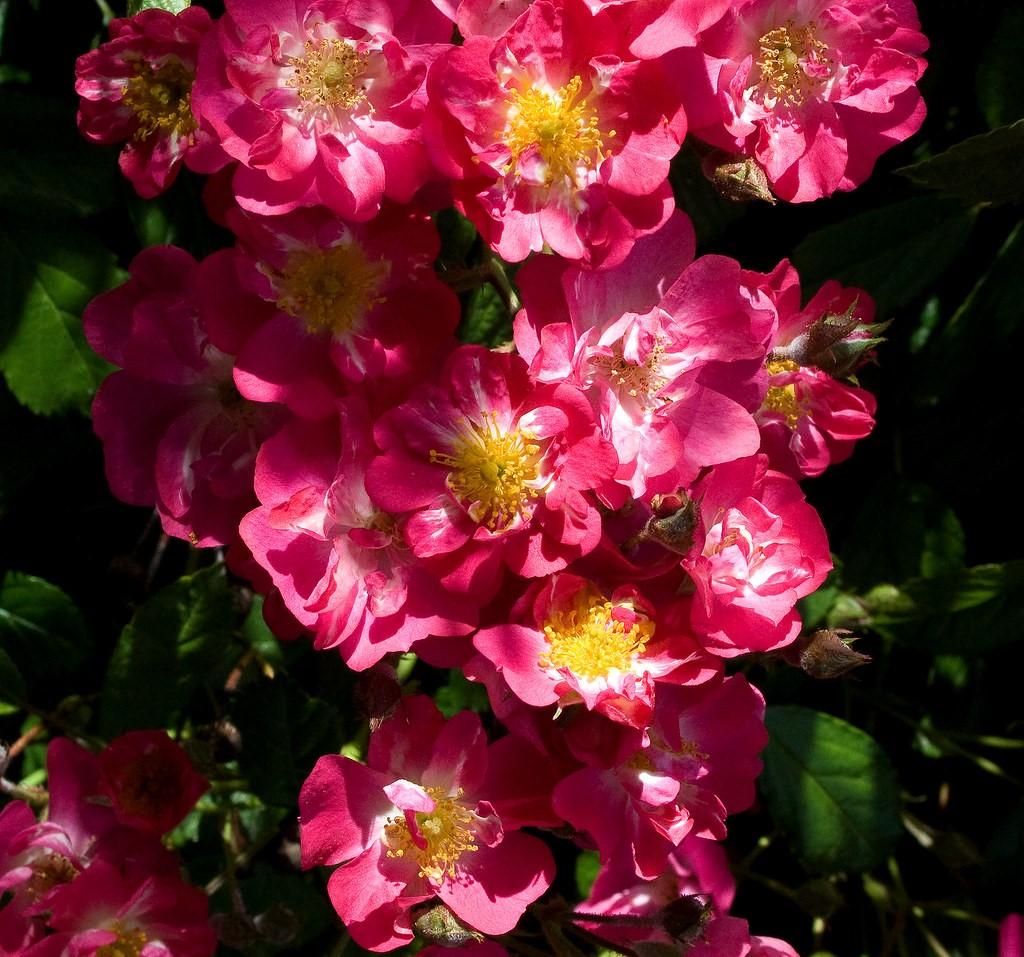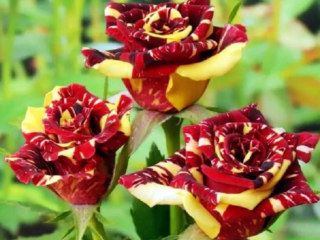Content
Despite their long history, musk roses have not become widely known. This is due to the fact that the flowers are very small and look more like violets than full-fledged roses. But they are used very actively in landscape design. Unlike hybrid tea varieties, they require almost no care. Plus, they smell nice and last a long time.
History of selection
Musk roses are a close relative of rose hips. The exact origin is still unknown as the crop has been cultivated for many centuries. Presumable homeland is eastern countries.
Flowers can be found far away in the West. Some specimens grow successfully in Africa, Europe and, of course, in Russia. The first officially known variety is Trier. It was developed by scientist Peter Lambert. These musk roses are intended for partial shade, have a creamy color and a well-defined aroma.

Another feature of the species is the absence of thorns
The difference between musk roses and other species
First of all, the plant has a different smell. It is not emitted by the petals, like other roses, but by the stamens.The aroma does not disappear even on rainy days. They began to be called “musky” because of the similarity of the smell to musk. There are also fruity and honey shades.
The difference lies in the fact that musk roses always bloom several times. The minimum number of waves is two. In the second phase, flowering does not lose its decorativeness and aroma, no different from the first wave. Other plants cannot boast of this; as a rule, after the first budding there are few flowers, they become smaller and quickly fall off.
There are no such problems with musk roses. Inflorescences constantly decorate the bush - and with the same intensity, regardless of the season. Because of them, green shoots are often not visible; if you look closely, it is noticeable that not all flowers are in excellent condition. But from a distance they are perfect.
In addition to several waves of flowering, musk roses have another advantage: the flowers open almost simultaneously.

First, the lower part of the bush blooms, as if covered with a flower carpet, which then spreads upward
Varieties of musk roses with photos and names
There are many varieties that take root well in the Russian climate. Top musk roses:
- Ballerina. The culture has classic pink buds with a light center. With frequent contact with the sun, they fade, becoming snow-white. One inflorescence contains from 20 to 90 flowers. Bushes can reach more than 100 cm in height.
Repeated flowering occurs after trimming the flowers remaining at the end of the first wave.
- Sankerhausen. Musk rose has a bright pink color and a faint but pleasant scent. Tall bushes - up to 150 cm in height. The shoots are very dense, so no supports are required. The flowering is lush and beautiful.
Disease resistance of the variety is above average
- Mozart. The plant has a compact size, growing no more than 100 cm. The flowers are light scarlet in color and have an expressive edge. There is a white spot in the middle part. Flowering is intense, with a large number of buds.
This variety is not afraid of negative temperatures
- Schwerin. The flowers have an elongated structure. They are collected in small groups of 7-8 pieces. in each. Compared to other varieties, this musk rose can be called a giant. The shrub has a spreading form.
The variety prefers to grow in light shade
- Buff Beauty. A strong plant reaching more than 1.5 m in height and width. The musk rose hybrid, judging by reviews, prefers sunny areas. True, the buds quickly burn out on them - the gardener will have to look for a “golden mean”.
The flowers of the plant emit the smell of peaches
- Robin Hood. By the standards of musk roses, this is a medium-sized variety, reaching about 120 cm. The shoots are long and slightly drooping, thorny. The leaves, despite their size, can be called small. The diameter of the flowers is 4 cm. With age, they may darken slightly.
This variety grows well in the shade and is resistant to precipitation.
Planting musk roses
Culture has an amazing ability to adapt. Musk roses overwinter in the Moscow region, in the Perm region, in the Crimea and even in Siberia. Some varieties do better in warm climates, some in temperate climates. Here they start from a specific plant.
In warm regions, planting begins in early autumn. In the middle zone, the best time is the last ten days of May or the beginning of June, when it is already warm outside. The seat is placed in the sun or in partial shade, protected from draft winds. The quality of the soil should be good: it is advisable to loosen the area, lay drainage material and enrich it with rotted manure.
Keep a distance between bushes taking into account the growth rate. Musk roses develop quickly, so the seedlings are distributed in 150 cm increments. When planted in groups, you will get a full-fledged hedge.
Caring for musk roses
Musk varieties are not as demanding as other roses. However, the queen of flowers should not be deprived of attention. She spends a lot of effort to maintain the growth force and at the same time form hundreds of flowers.
Watering
In summer, musk roses are watered 2-3 times a week; in autumn and spring, the schedule is reduced, since there is a lot of rainfall during these seasons. Flowerbeds can be irrigated with warm water.
Loosening
You need to loosen the soil several times every three months. Botanists advise doing this after each watering, but since recommendations are rarely followed, you should make sure that the soil is loose at least once a month.
Top dressing
Fertilizers are used 1-2 years after planting. The same substances that were added to the pit before reproduction are used.Typically, ammonium nitrate is added in the spring, calcium nitrate or the Kemira complex additive is added in the summer.
You can feed at your own discretion, guided by other plants.
Fertilizers can be intense or rare - the more often the owner uses them, the more magnificent the flowering. But you shouldn’t go overboard either, otherwise the musk roses will weaken.
Pruning musk roses
Haircuts are performed twice a year - at the beginning of the growing season and at its end. The main thing is not to cut the bushes too deep. Some varieties can be grown as climbing varieties. However, in the temperate Russian climate, the shoots of the crop are very flexible.
In the spring, musk roses are pruned for the first time. She must be weak. While the plant is young, it is useful to remove weak branches. Broken areas must also be inspected; there should be no drooping stems.

If necessary, you can trim the tops slightly
To preserve flowering, musk roses should be pruned in the fall. To do this, the root shoots are removed. They grow quickly, especially in mature bushes. Removing 2-3 shoots stimulates the plant to develop further, so the bush does not lose its lushness for a long time.
Sheltering musk roses for the winter
The bushes are covered in the traditional way. First, the plantings are covered with a dense layer of mulch, the stems are bent, covered with coniferous branches on top and a frame is installed. Depending on the region and variety, transplantation into greenhouse conditions can be considered.Young specimens are always protected, adults – depending on the climate.
Reproduction
The plant can be cut, grafted, divided. Usually they stick to the first option. To do this, healthy branches with five buds are selected, placed in water, and after roots have formed, they are planted in a mixture of sand and peat.
Photo of musk roses in landscape design

Designers recommend combining related plants in different colors

Plantings look great near stones, which also protect from drafts
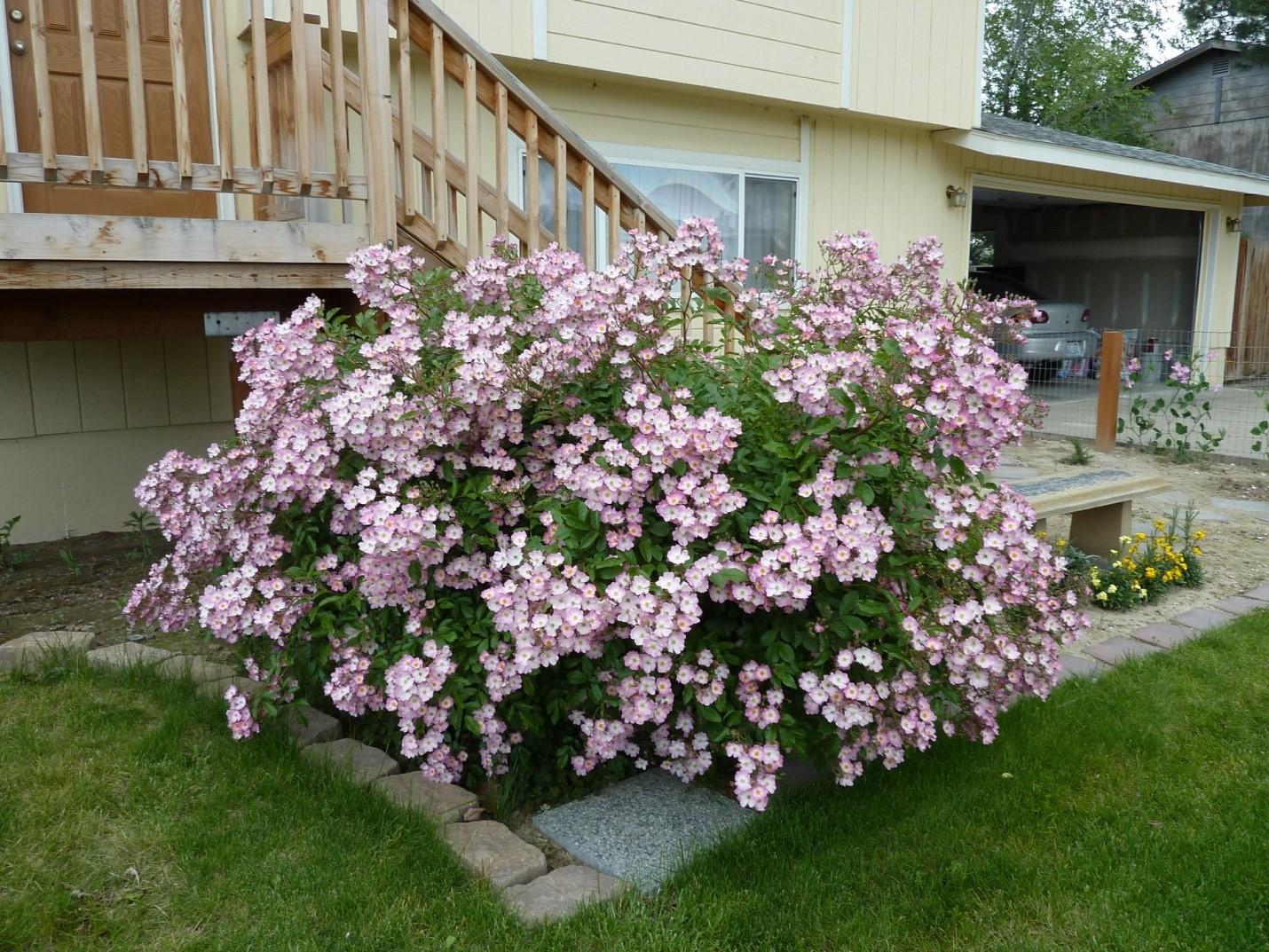
When planting near the entrance line, it is worth checking whether the color of the variety matches the overall tone
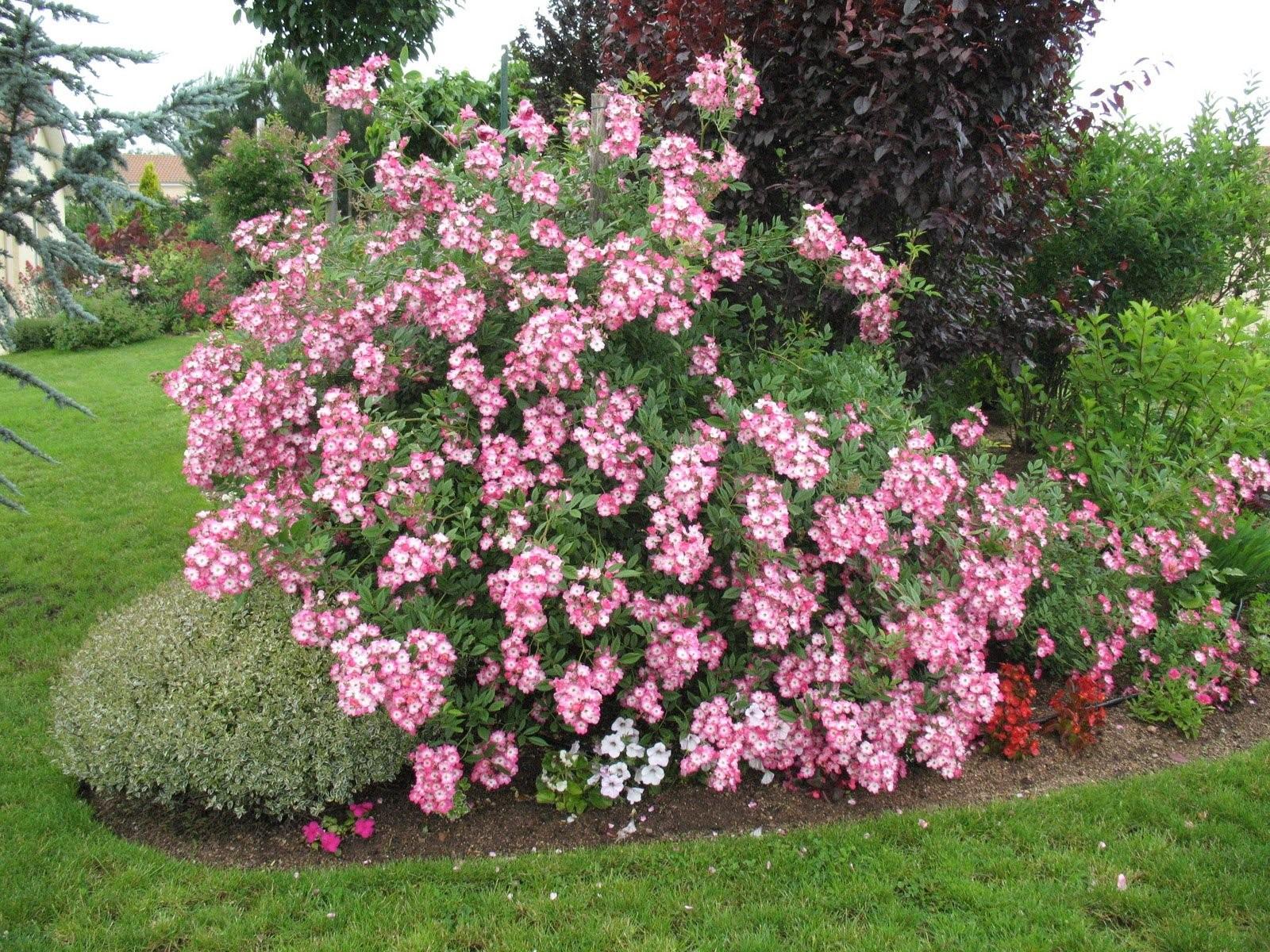
For culture, you can organize a special bed, placing shade-loving plants nearby

It is appropriate to place flowers not only in the background - they can become a bright “highlight” in the garden.
Conclusion
Despite their low popularity, musk roses have become widespread in all countries. They are mainly appreciated by landscape designers, since with the help of plantings they can easily zone space. The culture is undemanding in terms of care.
Reviews of musk roses



